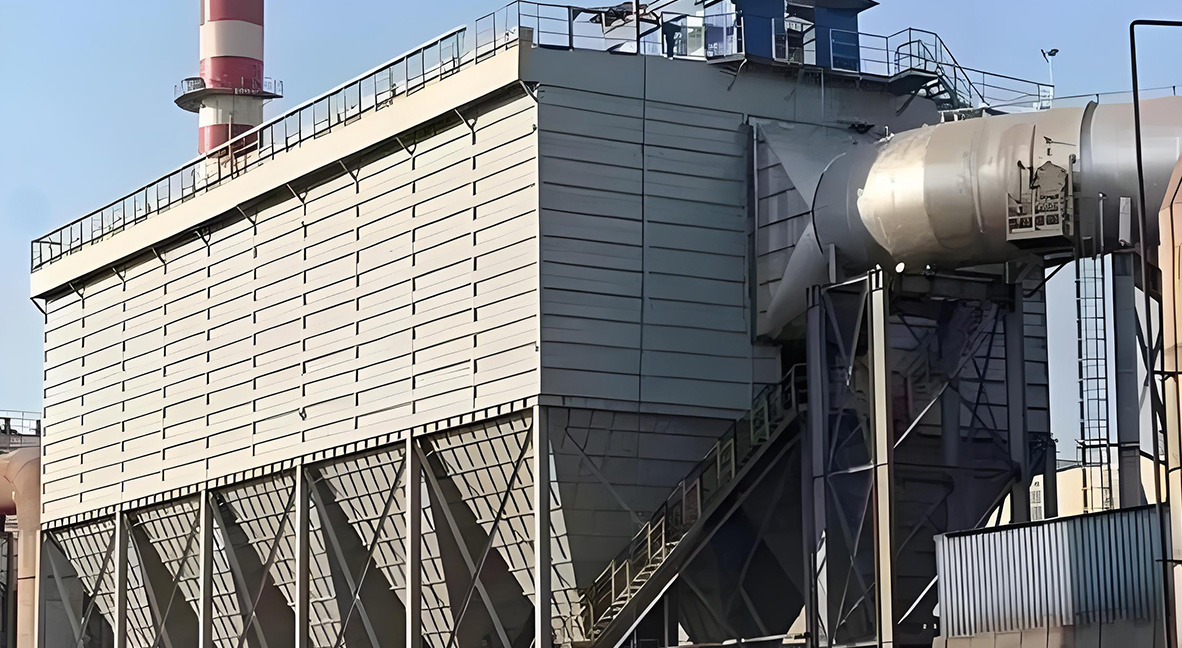
Causes and Solutions for Dust Filter Bag Detachment
Industrial dust collection systems widely use baghouse filters for their high filtration efficiency. However, many companies face problems with filter bags detaching during operation. Users often blame the bag manufacturers, but most detachment issues actually stem from improper dust collector design or installation. This article analyzes the root causes and provides practical solutions.
How Tube Sheet Holes Affect Bag Detachment
Key Functions of Tube Sheets
The tube sheet (or hole plate) is a critical component in baghouse filters. It serves two main purposes:
Separates the dirty gas chamber from the clean air chamber
Provides precise positioning for filter bag installation
Ideally, the bag’s snap ring should seal tightly in the tube sheet hole, ensuring all dirty air passes through filtration.
Impact of Hole Manufacturing Precision
| Manufacturing Method | Edge Quality | Roundness Tolerance | Effect on Snap Ring | Detachment Risk |
|---|---|---|---|---|
| CNC Punching | Smooth | ±0.5mm | Even force, full expansion | Low |
| Manual Cutting | Rough edges | ±2mm+ | Uneven expansion, stress points | High |
Case Study: A cement plant had frequent bag detachment. Inspection revealed tube sheet holes were flame-cut with only basic grinding, showing up to 3mm roundness deviation. This caused oval snap ring expansion and poor sealing.
Two Main Causes of Bag Detachment
1. Tube Sheet Hole Precision Issues
- Manufacturing Differences:
- Reputable manufacturers use CNC plasma cutting or precision dies
- Smaller shops may use manual cutting (torch/plasma cutting without finishing)
- Edge Quality Problems:
- Burrs and uneven edges prevent full snap ring expansion
- Sharp edges can damage rubber snap rings
- Roundness Deviation Effects:
- Snap rings expand into ovals instead of circles
- Creates uneven stress, leading to deformation over time
2. Incorrect Snap Ring Sizing (Less Common but Critical)
Though rare (~5% of cases), wrong sizing causes systemic detachment:
- Snap ring too small → Won’t grip the hole
- Snap ring too large → Hard to install or won’t expand fully
Expert Tip: Always test sample bags before mass production to verify fit.
Solutions: Full Process Control from Design to Installation
Design Phase Prevention
Precise Measurements:
- Use digital calipers to measure hole diameters (minimum 4 points)
- Record max/min values to calculate roundness error
Material Selection:
- Choose elastic, aging-resistant rubber snap rings
- For high temperatures, use silicone or fluororubber
Installation Quality Control
Pre-Installation Checklist:
- Remove all burrs from hole edges (use fine sandpaper)
- Check hole roundness (use roundness gauge)
- Clean tube sheet surface (remove weld slag and dust)
Proper Tools:
- Use specialized snap ring installation tools (no screwdrivers)
- Apply even force (two-person installation recommended)
Post-Installation Tests:
- Pull test: Apply 500N vertical force – displacement should be <2mm
- Light test: Check for light leaks from clean air side
Optimizing Pulse-Jet Cleaning Systems
Modern Cleaning Technology
Pulse-jet baghouses use “dynamic filtration-cleaning”:
Compressed air (0.4-0.6MPa) creates shock waves
Venturi effect induces secondary airflow (5-8× primary flow)
Microsecond bag expansion (200-300g acceleration)
Inertial cleaning: Dust layer dislodges from reverse acceleration
Optimized Cleaning Parameters
| Parameter | Standard Setting | Optimized Setting | Benefit |
|---|---|---|---|
| Air Pressure | 0.5MPa | Adjust by filter material (0.3-0.7MPa) | Longer bag life |
| Pulse Width | 0.1s | 0.08-0.15s (shorter for thin media) | 20% energy saving |
| Cleaning Interval | Fixed cycle | Differential pressure control (ΔP=1200-1500Pa) | Stable operation |
Case Data: A steel mill switched to pressure-based cleaning, extending bag life from 18 to 30 months while cutting air use by 35%.
Key Design Principles for Baghouse Filters
1.Meet Emission Standards:
- Comply with GB16297 (China) or local regulations
- Special industries (welding, asbestos) need stricter controls
2.Dust Characteristics:
- Sticky dust: Use PTFE-coated filter media
- Fine dust: Choose gradient structure media
3.Gas Conditions:
- High temperature (>260°C): Fiberglass media + cooling
- High humidity: Insulation + anti-condensation design
4.Fluid Dynamics:
- Maintain 0.8-1.2m/s internal velocity
- Keep inlet/outlet ΔP <500Pa
5.Modular Design:
- Large units should have compartmentalized structure (e.g., 8 chambers × 128 bags)
- Online maintenance capability (isolate individual chambers)
6.Lifecycle Costs:
- Calculate energy use (fans, compressed air)
- Estimate maintenance (bag replacement cycles)
Performance Data by Industry
Based on 500+ installations, optimized systems achieve:
| Parameter | Industry Standard | Optimized System | Requirements |
|---|---|---|---|
| Efficiency | >99% | >99.9% | Proper maintenance |
| Emissions | <30mg/m³ | <10mg/m³ | Membrane filter media |
| Bag Life | 2 years | 3-5 years | Correct selection + operation |
| Pressure Drop | <1500Pa | <1200Pa | Optimized cleaning |
Typical Applications:
- Steel: Converter gas treatment (<5mg/m³ emissions)
- Cement: Kiln exhaust (4-year bag life)
- Food: Flour collection (>99.99% efficiency)
Conclusion: A Systematic Approach
Filter bag detachment is fundamentally a system engineering challenge requiring solutions at three levels:
Equipment: Precise tube sheet machining (preferably CNC)
Components: Strict bag size control (±0.3mm tolerance)
Interface: Optimal snap ring/hole fit (0.5-1mm interference)
With full-process quality control and scientific cleaning design, dust collection systems can achieve reliable, long-term operation with “zero failures, zero exceedances.” Companies should pay close attention to these technical details and work closely with professional manufacturers for optimal performance and environmental compliance.
Final Tip: Bag detachment isn’t a product quality issue – it’s an installation or tube sheet precision problem! Choosing the right supplier and following proper procedures ensures stable operation.


